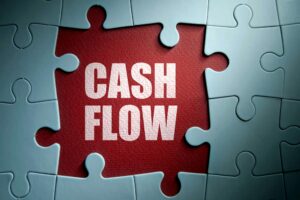
Current assets have a lifespan of one year or less, meaning they can be converted easily into cash. Such asset classes include cash and cash equivalents, accounts receivable, and inventory. Assets are on the top or left, and below them or to the right are the company’s liabilities and shareholders’ equity. A balance sheet is also always in balance, where the value of the assets equals the combined value of the liabilities and shareholders’ equity. The balance sheet also indicates an organization’s liquidity by communicating how much cash an organization has at present and what assets will soon be available in the form of cash. Assets are usually listed on a balance sheet from top to bottom by rank of liquidity (i.e. from most easily turned into cash to those assets most difficult to turn into cash).
Depicting your total assets, liabilities, and net worth, this document offers a quick look into your financial health and can help inform lenders, investors, or stakeholders about your business. balance sheets for dummies Based on its results, it can also provide you key insights to make important financial decisions. A bank statement is often used by parties outside of a company to gauge the company’s health.
How Balance Sheets Work
How assets are supported, or financed, by a corresponding growth in payables, debt liabilities and equity reveals a lot about a company’s financial health. For now, suffice it to say that depending on a company’s line of business and industry characteristics, possessing a reasonable mix of liabilities and equity is a sign of a financially healthy company. Current liabilities form the other end of the working capital of the business. They are the obligations that must be met using the cash flows from the current assets and other funding sources. While reading the balance sheet, it is important to study the company’s short-term obligations to check for any liquidity issues that may arise in the near term. In short, the balance sheet is a financial statement that provides a snapshot of what a company owns and owes, as well as the amount invested by shareholders.
- Activity ratios focus mainly on current accounts to show how well the company manages its operating cycle (which include receivables, inventory, and payables).
- Double check that all of your entries are, in fact, correct and accurate.
- If liabilities are larger than total net assets, then shareholders’ equity will be negative.
- This reflects the fact that Walmart is a big-box retailer with its many stores and online fulfillment centers stocked with thousands of items ready for sale.
- This balance sheet includes notes for preparation to guide you through the set up and calculation process.
Whether you need some coaching or to offload some bookkeeping work, QuickBooks’ trusted experts can work however you want to work. Try spending more time in your business and less time on your books and reporting with QuickBooks Live Bookkeeping. At the very bottom of the balance sheet, you will see totals for assets and liabilities plus equity. Verifying that these numbers match allows you to confirm that the data in your balance sheet is correct. It’s important to understand current vs. non-current liabilities because they affect your business differently and are listed separately on the balance sheet.
Long-term assets
He has presented to more than 250,000 people and is frequently interviewed by the media as an authority on real estate and small business entrepreneurship. Mr. Gray is president of the Canadian Enterprise Development Group Inc. and lives in Vancouver, BC. As investing becomes more globalized, you may start comparing U.S. companies with foreign companies.
If it happened in your financial past, the balance sheet reflects it. Double-entry bookkeeping means that both sides of transactions are recorded. For example, if one asset goes up, another asset goes down — or, alternatively, either a liability or owners’ equity goes up. Double-entry means two-sided, not that the transactions are recorded twice. Also called short-term assets, current assets include both cash and cash equivalents that can quickly become cash. That’s important, because in financial emergencies, companies need assets they can quickly convert into cash.
What Is a Profit and Loss Statement?
While the annual report offers something of a narrative element, including management’s vision for the company, the 10-K report reinforces and expands upon that narrative with more detail. You can also find detailed discussions of operations for the year, and a full analysis of the industry and marketplace. An ability to understand the financial health of a company is one of the most vital skills for aspiring investors, entrepreneurs, and managers to develop. Armed with this knowledge, investors can better identify promising opportunities while avoiding undue risk, and professionals of all levels can make more strategic business decisions. The easiest way to prepare a balance sheet is to use an accounting software package, which will automatically produce the report from the reports list. We have a free template download if you want to produce one using a spreadsheet.